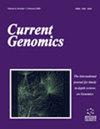植物MicroRNA表达的调控及其在小麦中的潜在应用改进
IF 1.4
4区 生物学
Q4 BIOCHEMISTRY & MOLECULAR BIOLOGY
引用次数: 0
摘要
摘要:小麦作为保障粮食安全的重要作物,其产量难以满足呈指数级增长的人口的需求。为了提高全球小麦生产水平,必须努力克服以下问题:(1)气候变化引起的高温和干旱胁迫;(2)小麦对组织培养的基因型依赖性,这限制了转基因植物的成功恢复,特别是在精英品种中。不幸的是,主流的植物蛋白编码基因基因工程方法可能无法有效地解决这些问题,因为它难以在小麦庞大、复杂的异源六倍体基因组中绘制、注释、功能验证和调节所有现有的同源物和相似物。此外,大多数农艺学上重要性状的数量和多基因性质进一步增加了这种方法面临的复杂性。mirna是一种小的非编码rna (sncrna),在转录后水平上抑制基因表达,调节植物生长发育的各个方面。它们作为作物改良基因工程的替代靶标越来越受欢迎,因为它们(1)高度保守的性质,有助于合理预测不同表达水平下的基因靶标和表型效应;(2)同时靶向多个基因的能力,使它们适合于增强复杂和多基因的农艺性状。在这篇综述中,我们将讨论植物mirna在提高小麦产量、体细胞胚胎发生、耐热性和耐旱性方面的生物发生、操作和潜在应用,以应对产量稳定、组织培养的基因型依赖性以及对气候变化引起的高温和干旱胁迫的易感性等问题。本文章由计算机程序翻译,如有差异,请以英文原文为准。
Modulation of Plant MicroRNA Expression: Its Potential Usability in Wheat (Triticum aestivum L.) Improvement
Abstract: Wheat, a crucial crop for the pursuit of food security, is faced with a plateauing yield projected to fall short of meeting the demands of the exponentially increasing human population. To raise global wheat productivity levels, strong efforts must be made to overcome the problems of (1) climate change-induced heat and drought stress and (2) the genotype-dependent amenability of wheat to tissue culture, which limits the success of recovering genetically engineered plants, especially in elite cultivars. Unfortunately, the mainstream approach of genetically engineering plant protein-coding genes may not be effective in solving these problems as it is difficult to map, annotate, functionally verify, and modulate all existing homeologs and paralogs within wheat’s large, complex, allohexaploid genome. Additionally, the quantitative, multi-genic nature of most agronomically important traits furthers the complications faced by this approach. miRNAs are small, noncoding RNAs (sncRNAs) that repress gene expression at the post-transcriptional level, regulating various aspects of plant growth and development. They are gaining popularity as alternative targets of genetic engineering efforts for crop improvement due to their (1) highly conserved nature, which facilitates reasonable prediction of their gene targets and phenotypic effects under different expression levels, and (2) the capacity to target multiple genes simultaneously, making them suitable for enhancing complex and multigenic agronomic traits. In this mini-review, we will discuss the biogenesis, manipulation, and potential applications of plant miRNAs in improving wheat’s yield, somatic embryogenesis, thermotolerance, and drought-tolerance in response to the problems of plateauing yield, genotype-dependent amenability to tissue culture, and susceptibility to climate change-induced heat and drought stress.
求助全文
通过发布文献求助,成功后即可免费获取论文全文。
去求助
来源期刊

Current Genomics
生物-生化与分子生物学
CiteScore
5.20
自引率
0.00%
发文量
29
审稿时长
>0 weeks
期刊介绍:
Current Genomics is a peer-reviewed journal that provides essential reading about the latest and most important developments in genome science and related fields of research. Systems biology, systems modeling, machine learning, network inference, bioinformatics, computational biology, epigenetics, single cell genomics, extracellular vesicles, quantitative biology, and synthetic biology for the study of evolution, development, maintenance, aging and that of human health, human diseases, clinical genomics and precision medicine are topics of particular interest. The journal covers plant genomics. The journal will not consider articles dealing with breeding and livestock.
Current Genomics publishes three types of articles including:
i) Research papers from internationally-recognized experts reporting on new and original data generated at the genome scale level. Position papers dealing with new or challenging methodological approaches, whether experimental or mathematical, are greatly welcome in this section.
ii) Authoritative and comprehensive full-length or mini reviews from widely recognized experts, covering the latest developments in genome science and related fields of research such as systems biology, statistics and machine learning, quantitative biology, and precision medicine. Proposals for mini-hot topics (2-3 review papers) and full hot topics (6-8 review papers) guest edited by internationally-recognized experts are welcome in this section. Hot topic proposals should not contain original data and they should contain articles originating from at least 2 different countries.
iii) Opinion papers from internationally recognized experts addressing contemporary questions and issues in the field of genome science and systems biology and basic and clinical research practices.
 求助内容:
求助内容: 应助结果提醒方式:
应助结果提醒方式:


